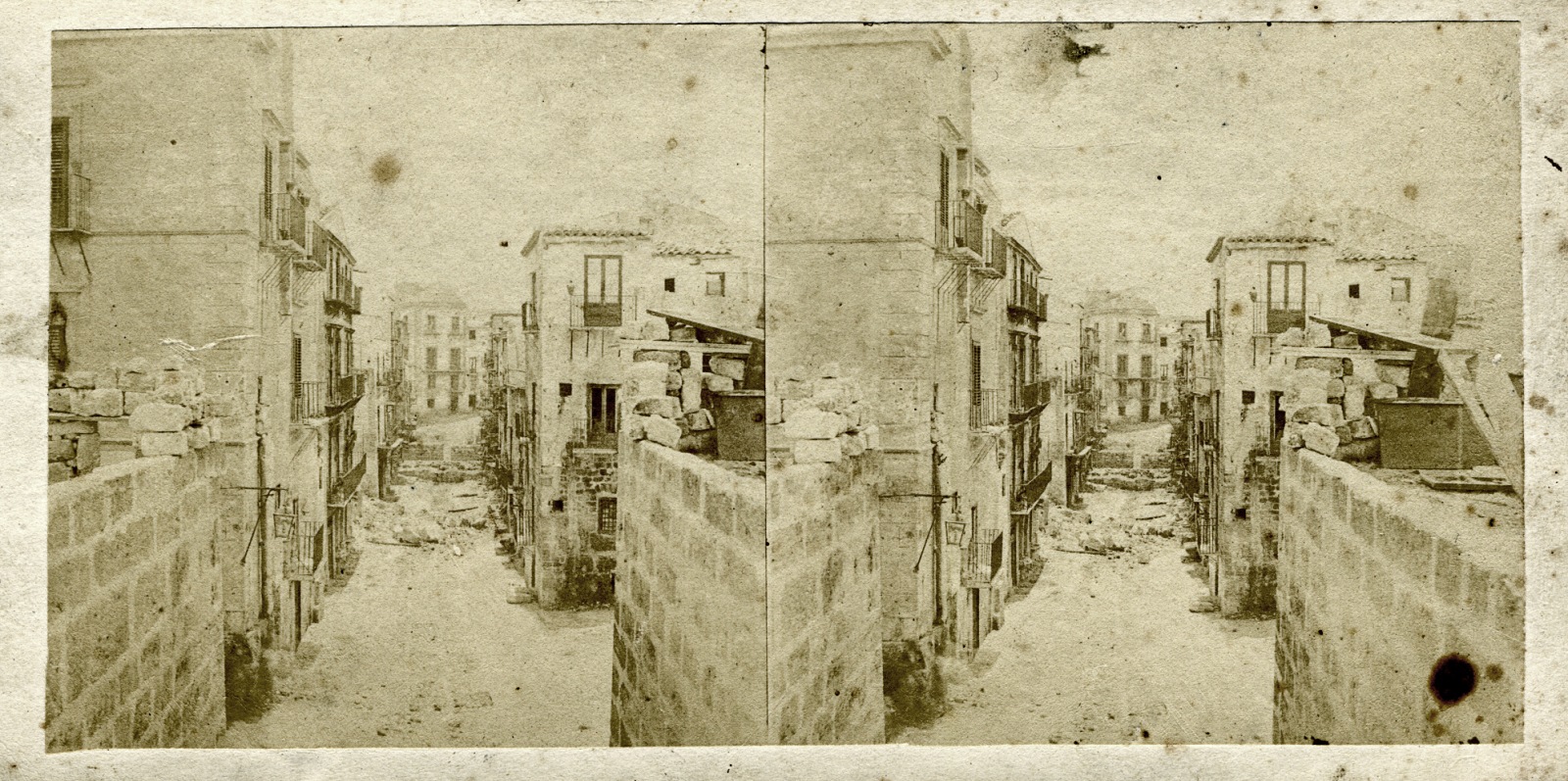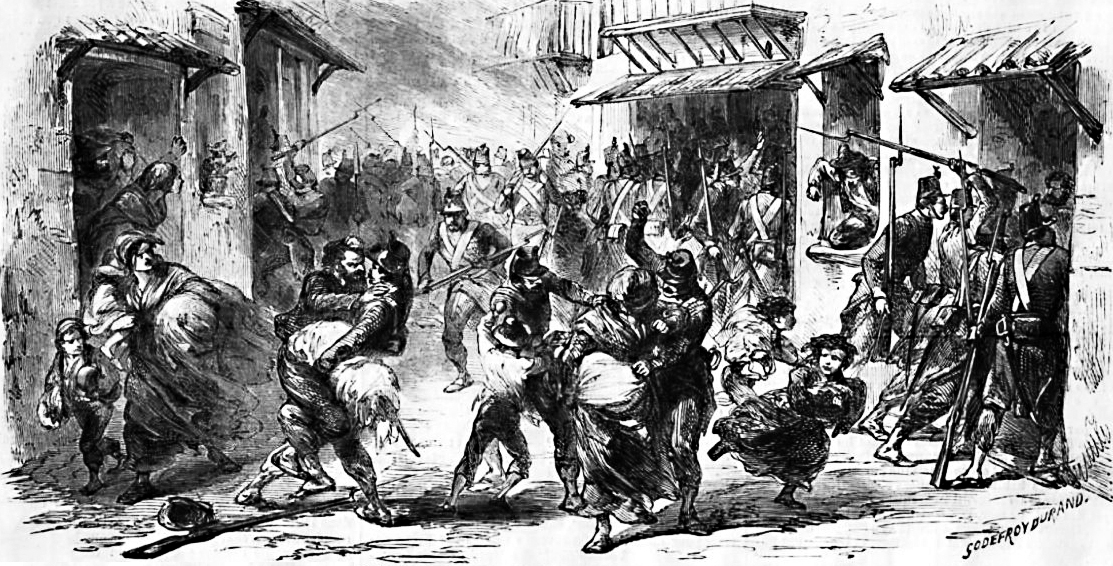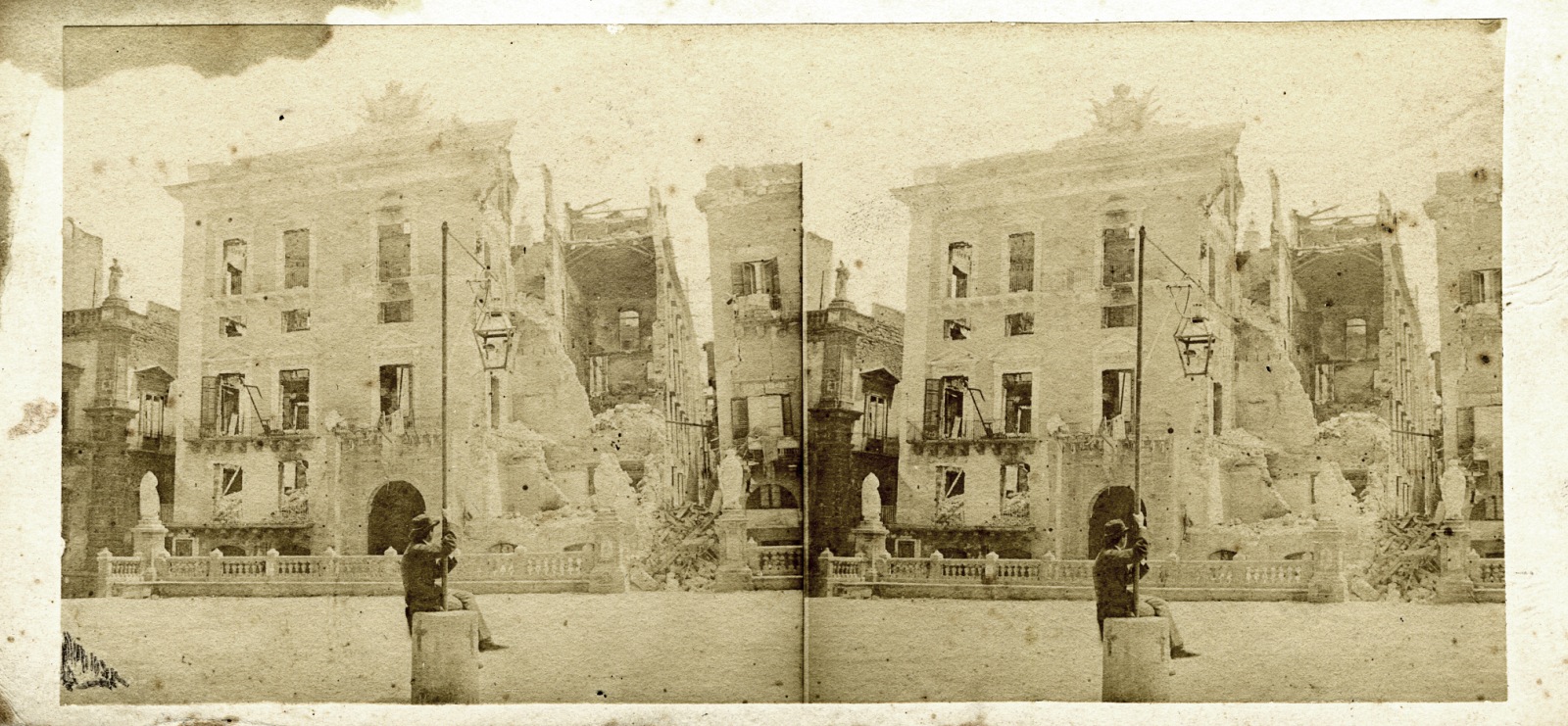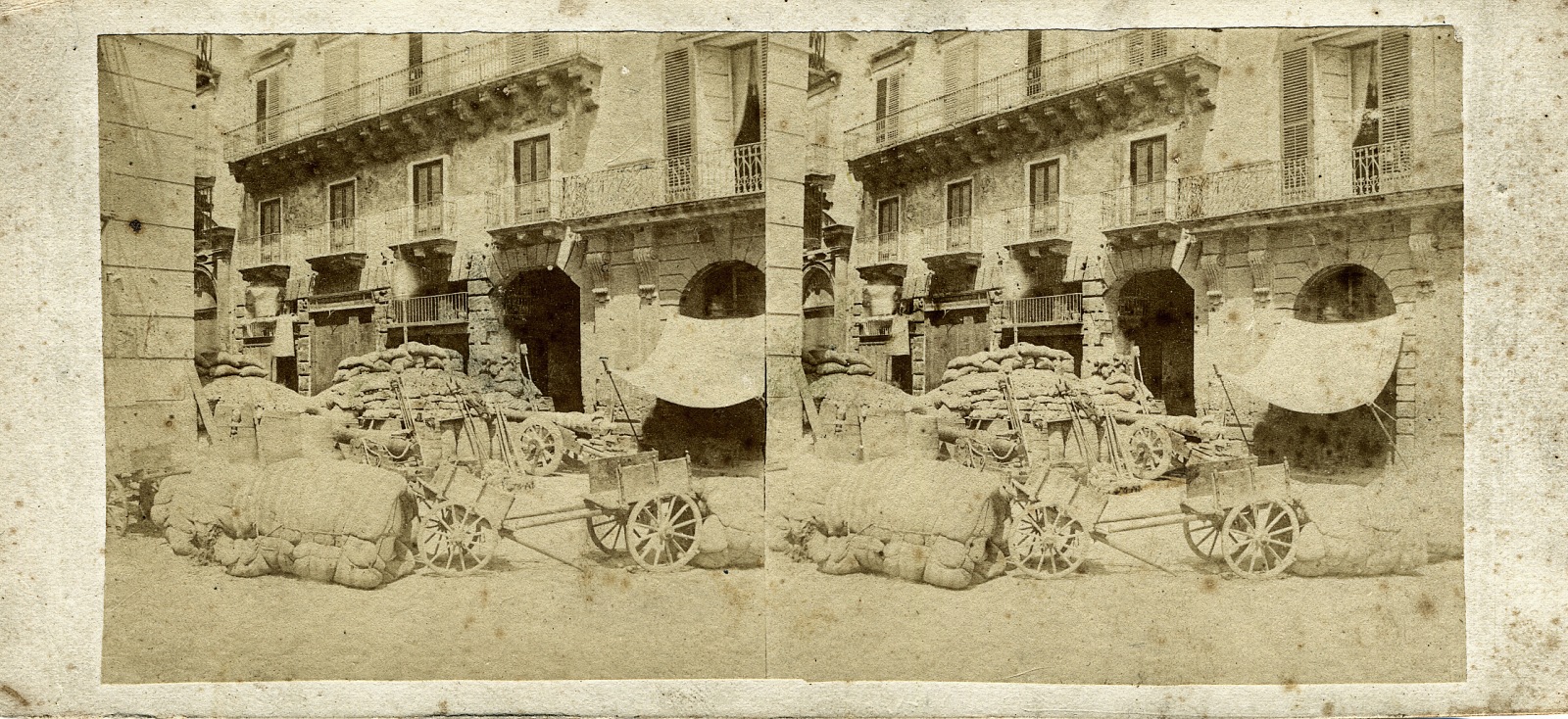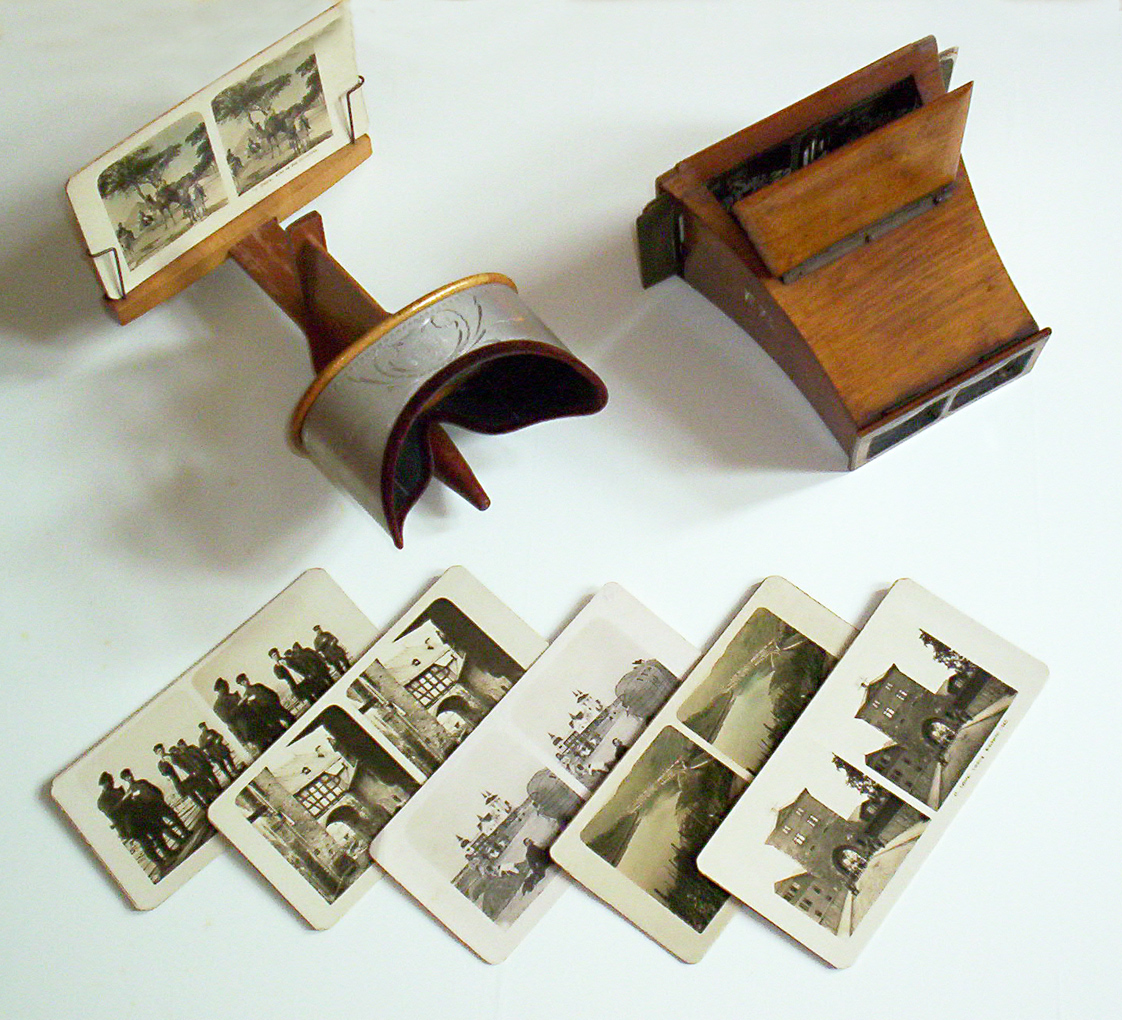Lalla Romano's words – decontextualised and forcedly borrowed – refer back directly to Barthes' analysis which sees the conjunction of a synchronic and diachronic level in each photographic image. (1)
Beyond doctrinal considerations, the spectator's approach inevitably undergoes a diachronic mutation, which is produced by the time gap between the production of the image and its observation. Within decades, the same original aim can vary, and move for example from a vernacular level to a documentary one. In due course, the pictures produced through domestic memory can become a source of information on the period in which they have been taken.
Within these ordinary considerations, we can include the case of Eugène Sevaistre's stereoscopes realised on the 2nd of June 1860, right after the end of the revolt of Palermo (27th - 30th of May 1860). On the one hand, they put us in front of a problem of the transformation of the urban landscape. The revolution subverts Palermo's visual urban layout even if with a temporary effect. The barricades organised either following military criteria or improvised by the population, introduce temporary architectonic variables that deeply effect the perception and fruition of the city. The urban fabric is however alive and constantly transforming. Its cells renew themselves again and again even when they are under the attack of revolutionary viruses.
By observing the pictures, it is inevitable for the modern spectator's mind to have questions on the happenings, the ways of living and the feelings of the people that were their protagonists. Actually, the pictures are able to reply only in a very partial way to this flood of questions. They can only offer a semblance of certainty related to the scenarios offered by fantasy, which works in league with the specific personal knowledge on the matter.
A third substantial starting point for reflection is offered by the questions on the nature of the pictures that arise on the spectator's mind when looking at Sevaistre's work. The approach that can be gathered by observing the images, together with the technical choices and habits of that period, induce to the hypothesis of a commercial matrix of the shoots.
|
|
In fact, nowadays, those images represent documents of exceptional interest and uniqueness that somehow are close to a journalistic approach, even if it is penalised by level of technology expressed in the photographic field around the mid 19th century. However, if we have at hand an adequate viewer, that can reproduce the original stereoscopic vision, Sevaistre's images are brought back to life and fully express their visual power.
The perspective partial views that highlight the tri dimensionality of this kind of vision, add more pathos to the emotional fascination deriving from their status of historical images. The limits of technology can be seen in the static nature of the shoot, where human figures appear almost as ghosts in the background of the barricades. This also contributes to increase the emotion, placing itself in the illusory condition of the cancellation of the spatio-temporal barriers. The events of 150 years ago emerge out of the pages of high school history books and surround us, thanks to the spatial illusion of the stereoscope.
What is then the enigma behind what we normally call vintage photos?
Far from solving the issue, we propose here an incentive to reflection (hoping it will go beyond these pages) remembering with a further unnecessary logical jump, a quotation from Calvino: «he wanted to recognise the screwed up and torn images in his photos and at the same time the unreality of random inky shadows, and at the same time again their concreteness of objects full of meaning, the strength with which they held on to the attention, trying to chase them away». (2)
[ The Editorial staff ]
--------------------------------------------
(*) - Free translation from Lalla Romano, Nuovo romanzo di figure, Einaudi, Turin, 1997; p. VIII-IX.
(1) - cfr. Roland Barthes, L'ovvio e l'ottuso, Einaudi, Turin, 1997.
(2) - Italo Calvino, L’avventura di un fotografo, from Gli amori difficili, in Calvino romanzi e racconti, vol.II, Meridiani Collezione, Arnoldo Mondadori Editore, Milan, 2005; p. 1109.
|
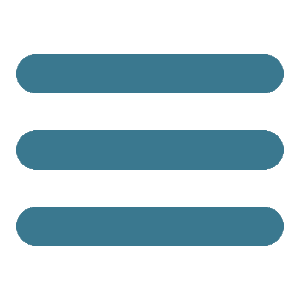
 home
cover ▼
opinions
news ▼
portfolio
post.it
post.cast
video
ongoing
thematicpaths
googlecards
FPtag
home
cover ▼
opinions
news ▼
portfolio
post.it
post.cast
video
ongoing
thematicpaths
googlecards
FPtag


